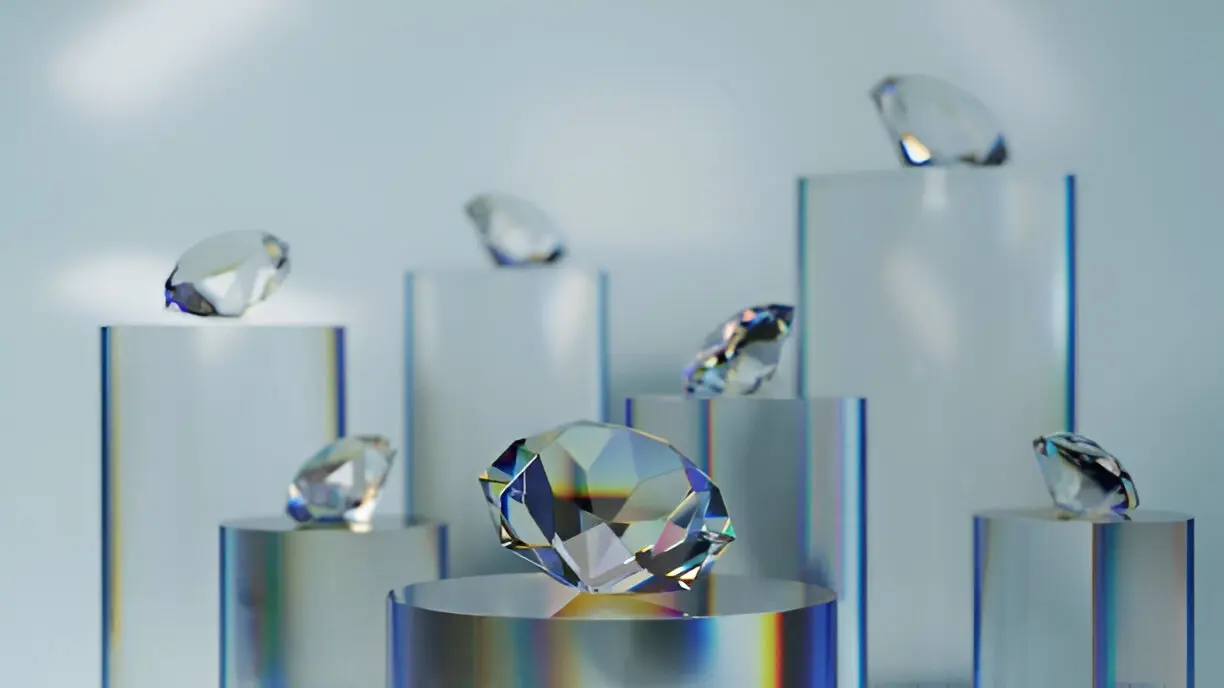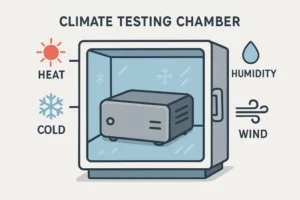The fine jewelry industry is experiencing its most dramatic transformation since the advent of modern cutting techniques. After decades of relying on the same extraction-based model, the sector is being reshaped by a simple yet revolutionary concept: diamonds don’t need to come from the ground to be real, beautiful, or luxurious.
This isn’t about compromise or settling for less. Lab-grown diamonds possess identical physical, chemical, and optical properties to their mined counterparts. They’re not “synthetic” or “artificial”—they’re diamonds, period. The difference lies not in what they are, but in how they’re made. And that difference is reshaping everything from supply chains to consumer expectations.
Technology Meets Artistry
The science behind lab-grown diamonds reads like something from a tech startup’s pitch deck, not a traditional jewelry house. Chemical Vapor Deposition (CVD) and High Pressure High Temperature (HPHT) processes replicate the extreme conditions that create diamonds naturally, but in controlled environments that can produce superior results in weeks rather than millennia.
CVD technology grows diamonds atom by atom in vacuum chambers, allowing unprecedented control over clarity, color, and size. HPHT recreates the intense pressure and heat found 100 miles beneath the Earth’s surface, but with mathematical precision. The result? Diamonds that often exceed the quality standards of the finest mined stones.
This technological mastery has profound implications for the future of fine jewelry. When quality becomes predictable and controllable, designers can push creative boundaries previously constrained by the lottery of geological formation. Custom cuts, specific color grades, and matched sets become standard offerings rather than rare finds.
The Sustainability Revolution
The environmental mathematics are stark and undeniable. Traditional diamond mining moves 1,750 tons of earth for every carat extracted. That’s equivalent to excavating a swimming pool to find a single stone. The process consumes massive amounts of water, destroys ecosystems, and leaves permanent scars on landscapes.
Lab-grown diamond production flips this equation entirely. The process uses 85% less water per carat and generates a fraction of the carbon emissions. When powered by renewable energy—as many facilities increasingly are—the environmental impact approaches zero.
But diamond sustainability extends beyond environmental metrics. It encompasses the entire lifecycle of luxury goods production: from energy sources and waste management to labor practices and supply chain transparency. Lab-grown diamonds enable brands to offer complete traceability—something impossible with mined stones that pass through multiple intermediaries across different continents.
Ethics as a Luxury Standard
Today’s luxury consumers, particularly millennials and Gen Z, have redefined what premium means. They’re willing to pay more for products that align with their values, but they’re also unwilling to accept opacity in supply chains. This shift has created what industry analysts call the “conscious luxury” market—a segment that prioritizes ethical sourcing alongside aesthetic appeal.
Lab-grown diamonds eliminate the ethical ambiguities that have plagued the traditional diamond trade. There are no conflict regions, no exploitative labor practices, no environmental devastation. The entire production process occurs in regulated facilities with transparent operations and documented worker protections.
This transparency advantage has attracted a new generation of jewelry entrepreneurs who view ethical sourcing not as a marketing angle but as a fundamental business requirement. They’re building brands around values-driven luxury, where the story behind the product matters as much as the product itself.
Industry Pioneers: The Labrilliante Model
Companies like Labrilliante exemplify this new approach to fine jewelry. Rather than simply substituting lab-grown stones into traditional business models, they’ve reimagined the entire value proposition around technology, sustainability, and transparency.
Labrilliante’s production process combines advanced CVD and HPHT technologies with rigorous quality control systems that ensure consistency across their entire inventory. Their specifications are published and verifiable—a level of transparency that traditional diamond sources simply cannot match.
More importantly, they’ve structured their business to serve both B2B manufacturers seeking reliable, high-quality stones and direct consumers who want to understand exactly what they’re buying. This dual approach reflects the industry’s evolution toward greater supply chain integration and customer education.
Their commitment to sustainable production goes beyond energy efficiency. They’ve implemented closed-loop systems that minimize waste, use recycled materials where possible, and maintain carbon-neutral operations. Its luxury production was reimagined for the climate-conscious era.
Market Dynamics and Consumer Behavior
The numbers tell a compelling story. Lab-grown diamond sales have grown by over 200% in the past three years, with projections suggesting they’ll capture 25% of the global diamond market by 2030. This growth isn’t coming at the expense of overall jewelry sales—it’s expanding the market by attracting consumers who previously avoided diamonds due to ethical concerns.
Price transparency has also improved dramatically. While mined diamonds carry unpredictable premiums based on rarity and marketing, lab-grown diamonds follow more logical pricing models based on production costs and quality specifications. Consumers can purchase larger, higher-quality stones for the same budget, or achieve their desired specifications at lower price points.
The luxury positioning is crucial here. Lab-grown diamonds aren’t competing on price alone—they’re competing on values, quality consistency, and future-forward thinking. The most successful brands in this space position their products as premium choices for discerning consumers, not budget alternatives.
Reshaping Industry Standards
Traditional jewelry houses initially resisted lab-grown diamonds, but market forces have compelled adaptation. Major brands now offer lab-grown collections, often positioned as separate lines targeting younger, more environmentally conscious consumers.
This segmentation strategy, however, may be temporary. As production scales and quality improves, the distinction between “natural” and “lab-grown” becomes less relevant to consumers focused on beauty, durability, and ethical sourcing.
The technology also enables new business models. Direct-to-consumer brands can offer customization options previously available only through high-end bespoke jewelers. B2B suppliers can guarantee delivery schedules and quality specifications that mining operations cannot match.
The Luxury Redefined
The transformation of fine jewelry reflects broader changes in how we define and consume luxury. Exclusivity based on scarcity is giving way to exclusivity based on values alignment and superior execution. Consumers want products that reflect their intelligence, not just their spending power.
Lab-grown diamonds represent this evolution perfectly. They offer identical beauty and durability to mined stones while eliminating the ethical and environmental compromises. They enable greater creativity in design while providing better value propositions. They satisfy luxury desires while aligning with contemporary values.
The future of fine jewelry isn’t about choosing between natural and laboratory-created diamonds. It’s about choosing between old-world opacity and new-world transparency, between extractive and regenerative business models, between luxury that costs the earth and luxury that preserves it.
Smart brands understand this shift and are positioning themselves accordingly. They’re not just selling jewelry—they’re selling a vision of responsible luxury that resonates with informed consumers who refuse to compromise their values for beauty.
The diamonds may be grown in laboratories, but the luxury they enable is entirely real.
Also Read-Data Science Innovations Transforming the Fintech Landscape








